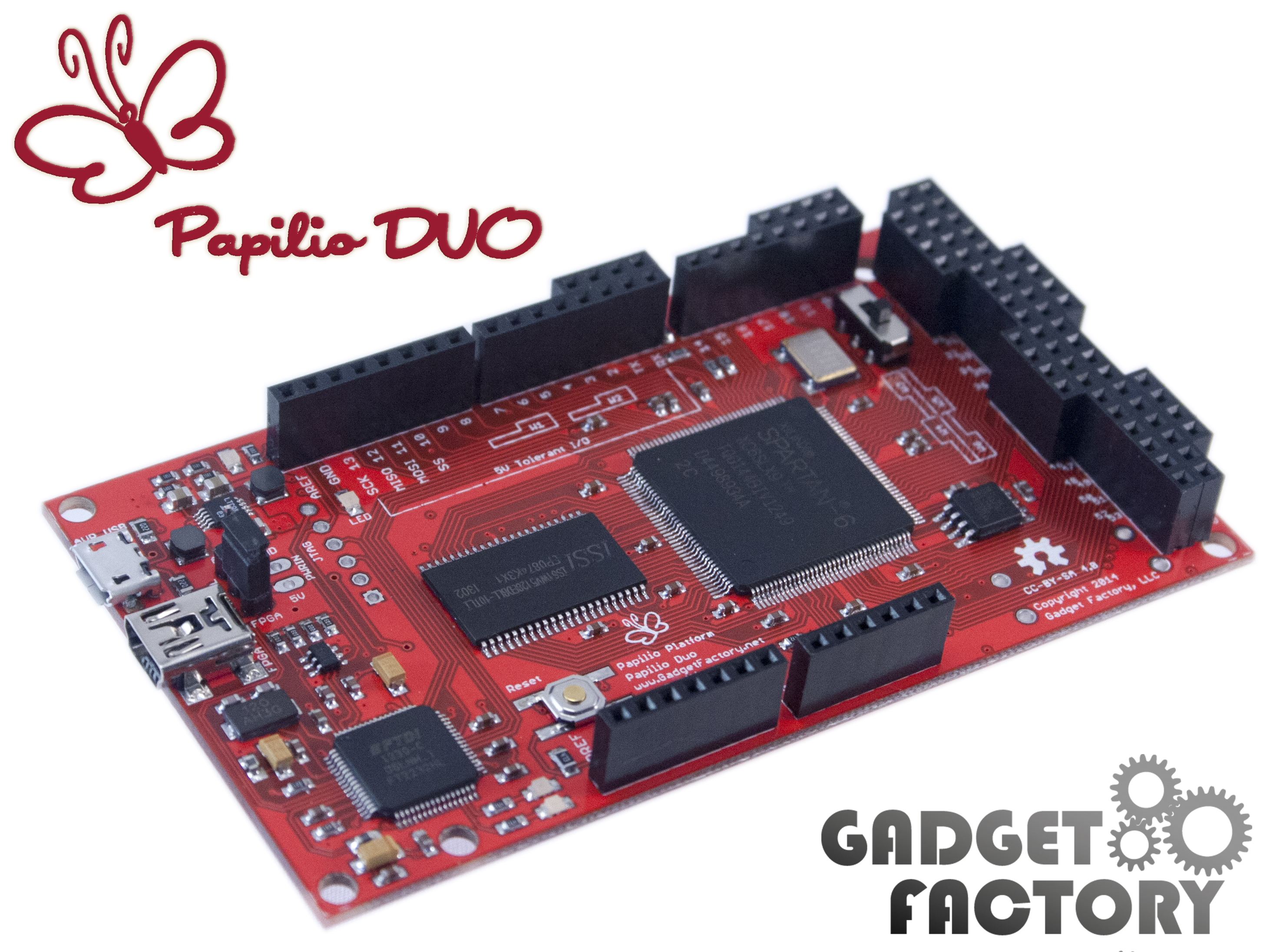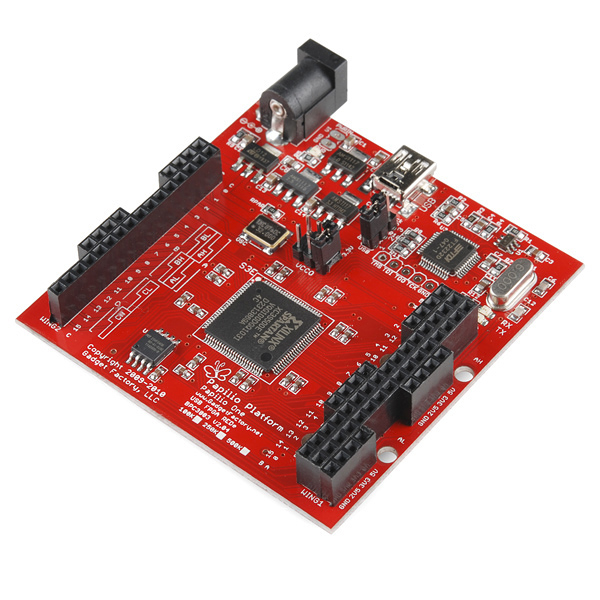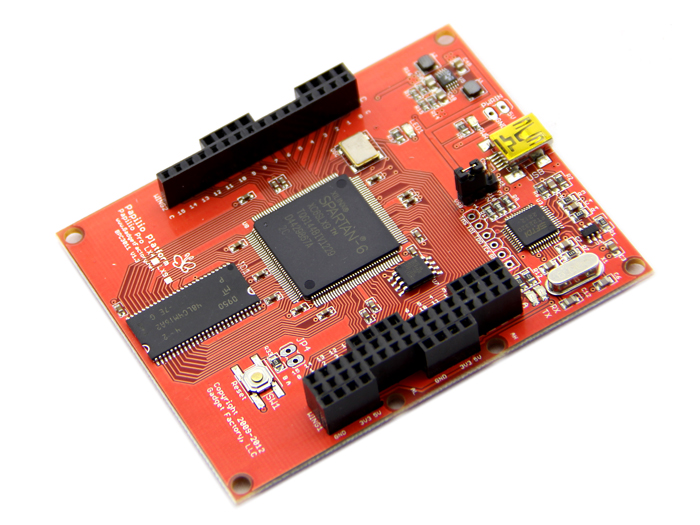Contents
Papilio FPGA
Hardware | Papilio DUO - Papilio One - Papilio Pro - MegaWings - Wings - Shields
Papilio Hardware Index
Have you been thinking about jumping into FPGA development but are not sure how to get started? Well, take a look at the Papilio - an Open Source FPGA board with everything you need to get started at a low price. With a friendly and supportive community, free VHDL eBook, Open Source Arduino compatible Soft Processors, and plenty of code examples you will have all the resources needed to get you started on the FPGA path. It's never been easier to jump into the wide-open world of FPGA development!
Papilio DUO Hardware Guide
The Papilio DUO has an FPGA on the top and the same chip that is used in the Arduino Leonardo (ATmega32U4) on the bottom. It's like having an Arduino with a full circuit laboratory connected to it! For example, you can draw circuits to move pins, connect extra serial ports, or connect a bitcoin miner to the Arduino-Compatible chip. Just plug it into your computer using a USB cable, download our software and start drawing your own circuits.
- Xilinx Spartan 6 LX9 FPGA
- 512KB or 2MB SRAM
- AVR ATmega32U4 chip that is a derivative of the Arduino Leonardo design.
- High efficiency LTC3419 Switching Voltage Regulator
- 64Mbit Macronix MX25L6445 SPI Flash
- 54 I/O pins arranged in an Arduino-Compatible Mega Form Factor
- High Speed USB port for programming and communication
- ZPUino Soft Processor
Papilio One Hardware Guide
The Papilio One is a powerful, open-source, expandable development board perfect for the design and prototyping of your unique ideas. You can customize the capabilities of the Papilio with snap-on modular expansions called Wings (similar to Arduino shields) which provide added functionality to the board, and simultaneously expand the creative possibilities!
At its heart, the Papilio One has a Xilinx Spartan 3E FPGA chip, providing a plentiful amount of digital logic to quickly get your prototyping off the ground. In addition, you can code for the FPGA using established development tools, or you can use Gadget Factory's custom Arduino IDE to easily write Arduino code and upload it to the AVR8 soft processor!
- Fully Assembled with a Xilinx Spartan 3E and 4Mbit SPI Flash Memory
- Provides an Easy Introduction to FPGA, Digital Electronics, and System on a Chip design
- Easily add New Functionality with Wings that Snap onto the Board
- Two-Channel USB Connection for JTAG and Serial Communications
- Four Independent Power Rails at 5V, 3.3V, 2.5V, and 1.2V
- Power Supplied by a Power Connector or USB
- Input Voltage (recommended): 6.5-15V
- 48 I/O lines!
Papilio Pro Hardware Guide
The Open Source Papilio Pro LX9 FPGA board is a powerful and flexible platform that provides the core for exciting projects such as the RetroCade Synth and the Papilio Arcade. It acts as the empty canvas that classic audio chips and arcade motherboards can be recreated on. Its flexible nature means that it can be re-used with future Papilio projects by simply purchasing the MegaWing portion of a project.
- Xilinx Spartan 6 LX9 FPGA
- 64Mbit (8MByte) SDRAM
- High Speed USB port for programming and communication
- ZPUino Soft Processor
- YM2149
- MOS 6581 (I.E. C64 SID)
Papilio Shields
Computing Shield
The Classic Computing Shield provides all of the hardware needed to recreate classic computing systems on the Papilio DUO.
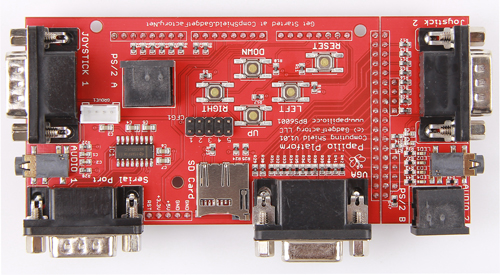
Specifications
- VGA Port - 4r,4g,4b, 4096 Color, 12-bit VGA Output
- 2 Stereo Audio Jacks
- Two PS/2 Jacks
- 2 Atari Style Joystick Ports
- MicroSD Socket
- 4 Directional Control Buttons
- RS232 Serial Port
Computing Shield Hardware Guide
LogicStart Shield
The LogicStart Shield provides everything needed to get started with VHDL and FPGA development on the Papilio with one convenient and easy to connect circuit board.
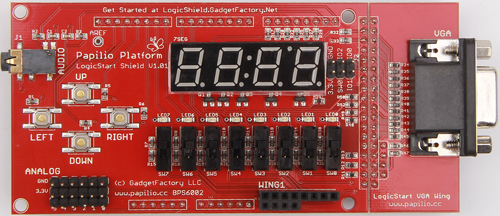
Specifications
- 7 Segment Display - 4 Character
- VGA Port - 4r,4g,4b, 4096 Color, 12-bit VGA Output
- Stereo Audio Jack - 1/8" Jack, Low Pass Filter
- 4 Directional Buttons
- 6 Analog Channels connected to ATmega32U4 on Papilio DUO
- 8 LED's - User Feedback
- 8 Slide Switches - User Input
- Snap off the VGA portion of the circuit to free up two 8-bit Wing Slots
LogicStart Shield Hardware Guide
MegaWings
MegaWings plug into the Papilio board and provide everything needed for a specific application in one convenient PCB. Wings usually provide ala carte functionality for rapid prototyping while MegaWings provide everything needed for a full application.
For a full list of MegaWings visit the Gadget Factory Store.
| Description | Hardware Guide | Wiki | |
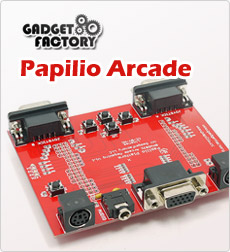 | Arcade MegaWing Everything needed for Arcade games |  |  |
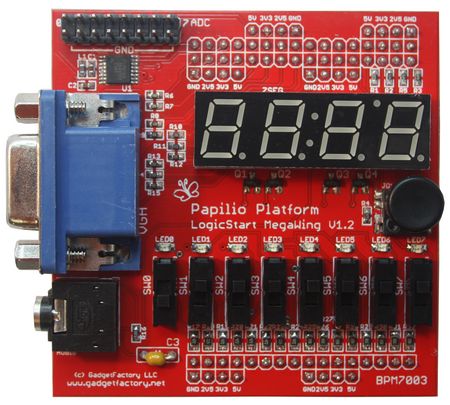 | LogicStart MegaWing Everything needed to start learning VHDL and FPGA technology on the Papilio. |  | |
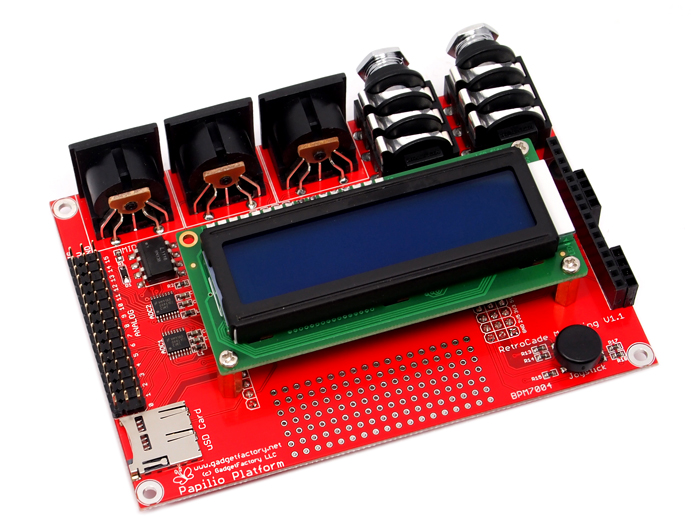 | RetroCade MegaWing Everything needed to make sweet retro music in one convenient and easy to connect circuit board. It snaps into the Papilio Pro and gives it the necessary hardware resources to communicate with the outside world. |  |  |
Wings
Wings plug into the Papilio board and provide peripheral functionality. The Papilio One can accept up to six Wings that can operate independently of each other. Wings usually provide ala carte functionality for rapid prototyping while MegaWings provide everything needed for a full application.
For a full list of Wings visit the Gadget Factory Store.
Don't forget to look at prototype and user contributed Wings on the Wing Playground.
| Description | Wiki | |
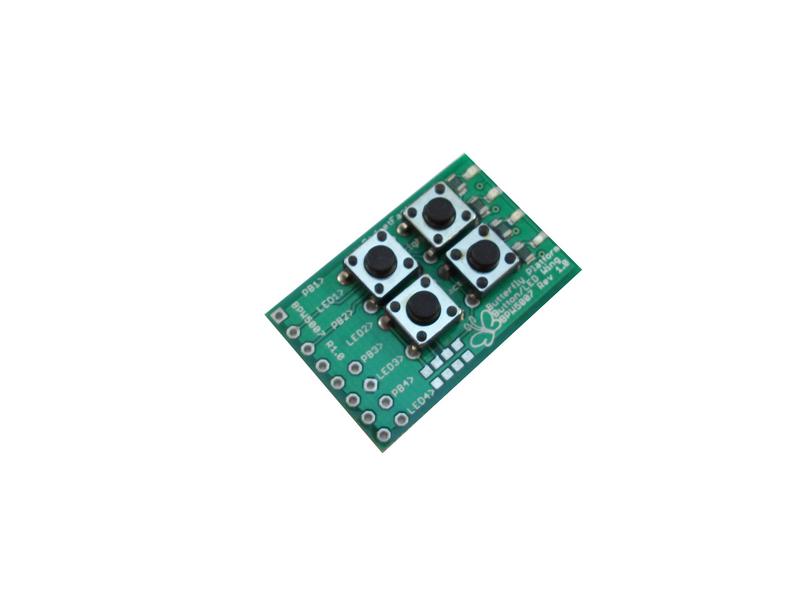 | Button/LED Wing Provides 4 LED's and 4 Buttons in a convenient 8-bit Wing |  |
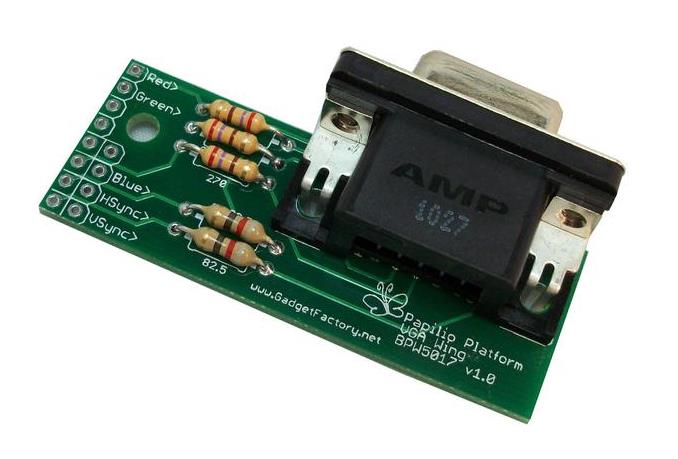 | VGA Wing Add 8 bit graphics to your projects |  |
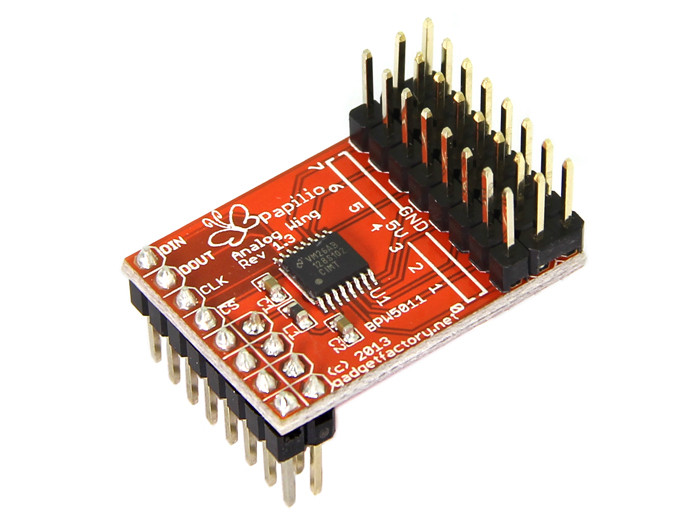 | Analog Grove Wing Connect any analog device including the large selection of Seeed Studio's analog Grove devices! |  |
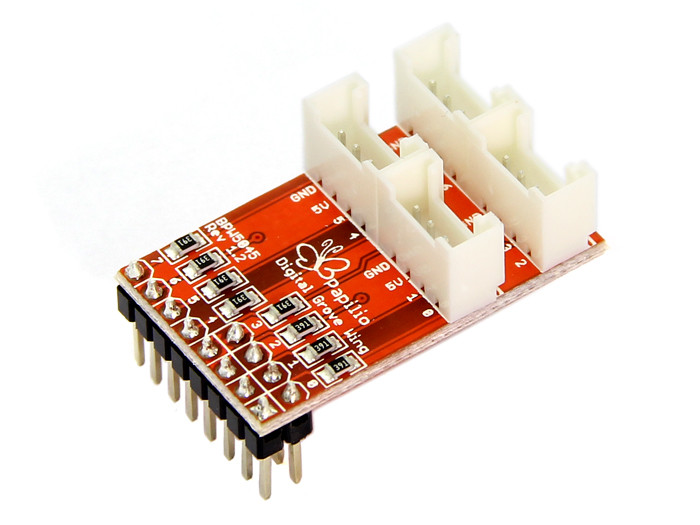 | Digital Grove Wing Want to use Seeed Studio's Digital Grove accessories? Look no further, this Wing will do the trick. |  |
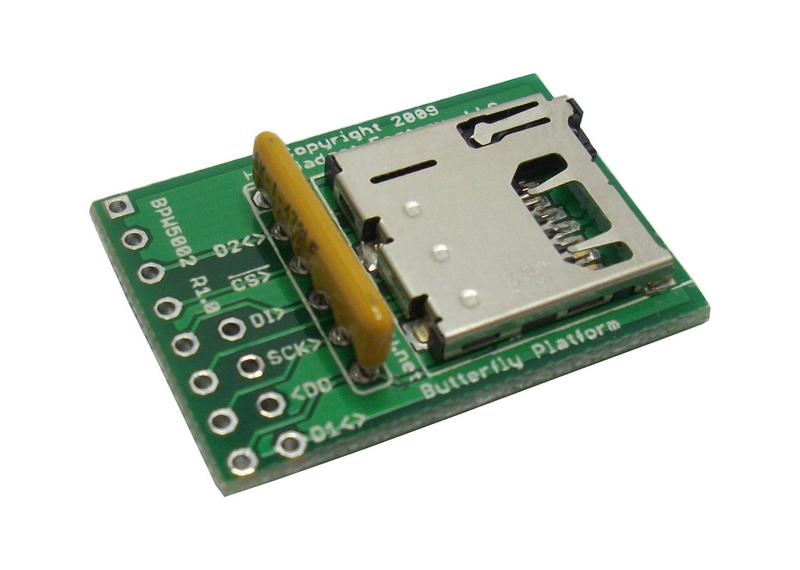 | MicroSD Wing 8 Bit Wing that allows a MicroSD (Secure Digital) card to be plugged in and accessed using SPI |  |
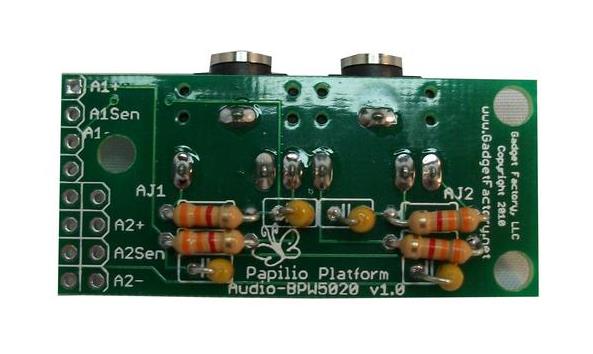 | Audio Wing Provides the Papilio One with two channels of stereo audio |  |
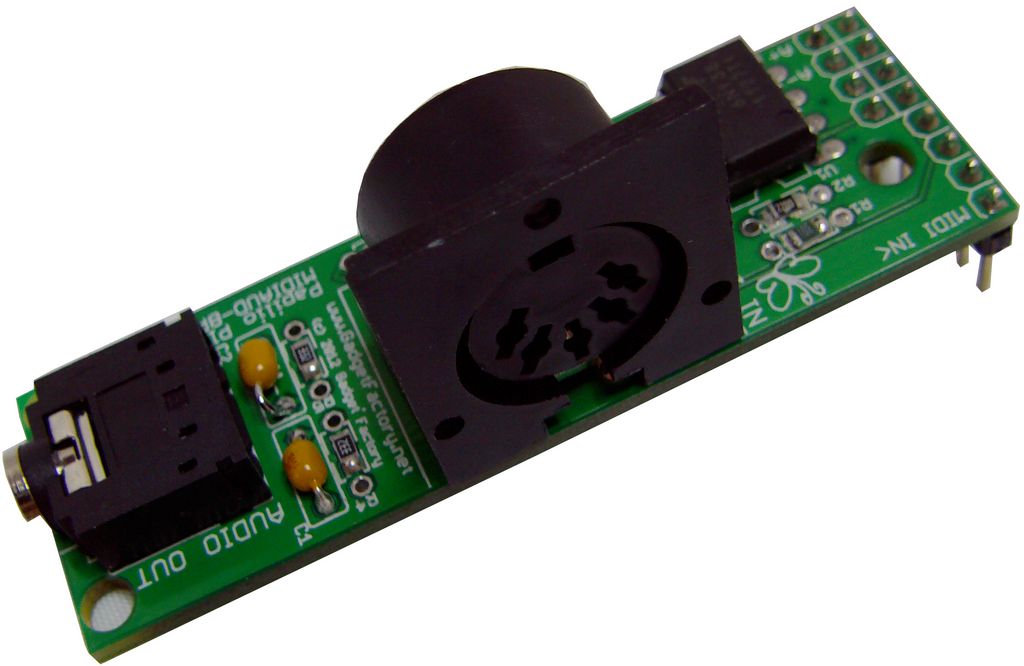 | MIDI Audio Wing Experiment with audio and create instruments with the MIDI Audio Wing. |  |
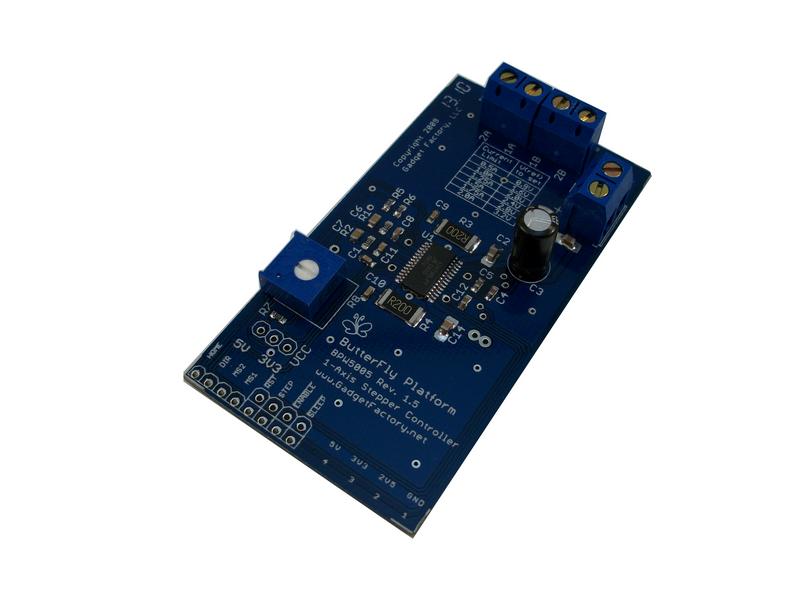 | 1-Axis Stepper Motor Controller Wing Microstepping single axis stepper motor controller |  |
 | Keyboard and Mouse (PS/2) Wing 8 Bit Wing that provides 2 PS/2 ports for interfacing with keyboards, mice, and barcode scanners |  |
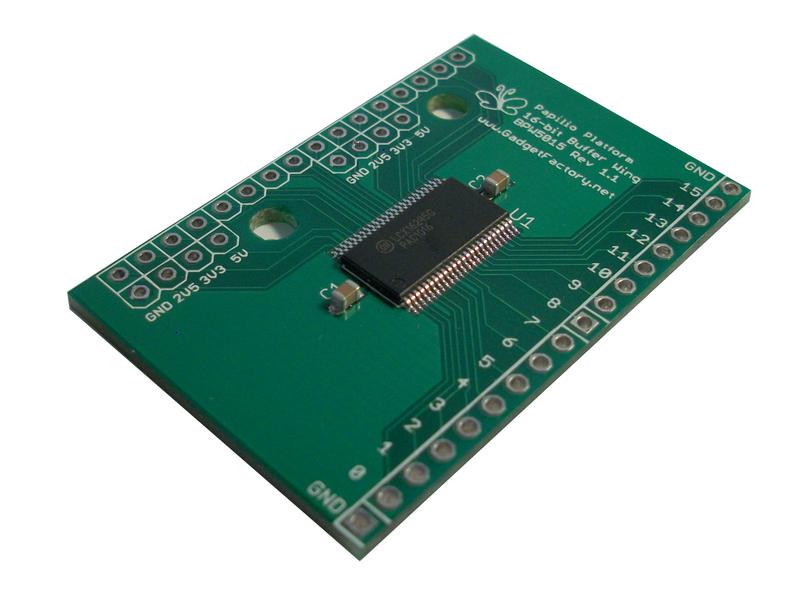 | 16-bit I/O Buffer Wing Provides a 16-bit, 5V tolerant bidirectional buffer for the Papilio Platform boards, and can also be used with the OLS Logic Analyzer |  |
 | 16-bit Input Buffer Wing Provides a 16-bit, 5V tolerant input only buffer for the Papilio Platform boards, and can also be used with the OLS Logic Analyzer |  |
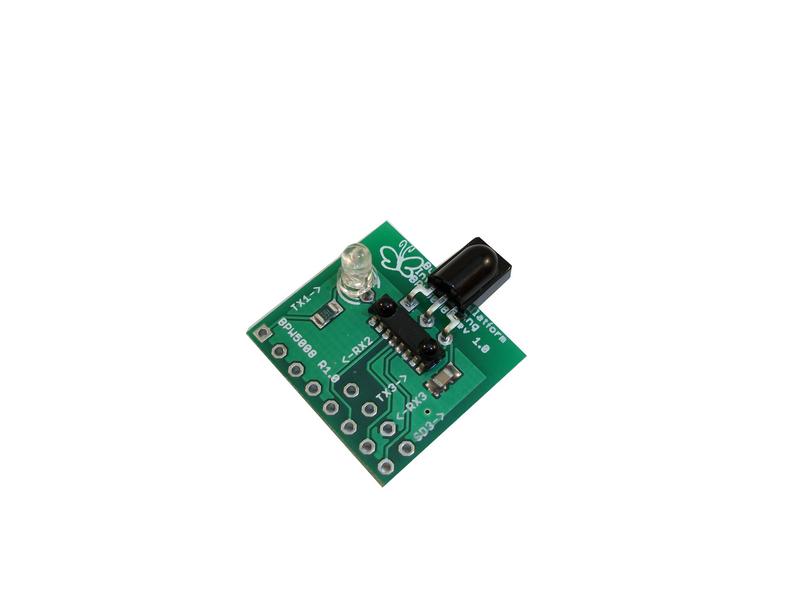 | Infrared Wing 8 Bit Wing that provides Consumer Infrared and optional IRDA capabilities |  |
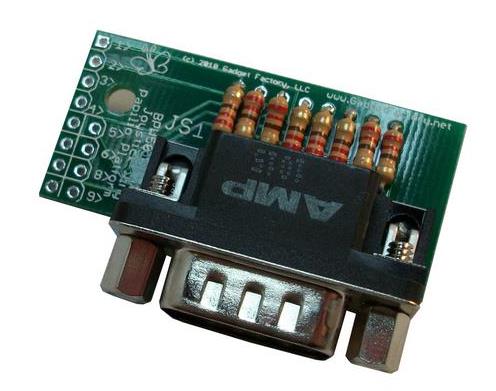 | Joystick Wing Allows many joysticks such as the Atari 2600 and Commodore joysticks to be used with the Papilio One |  |

